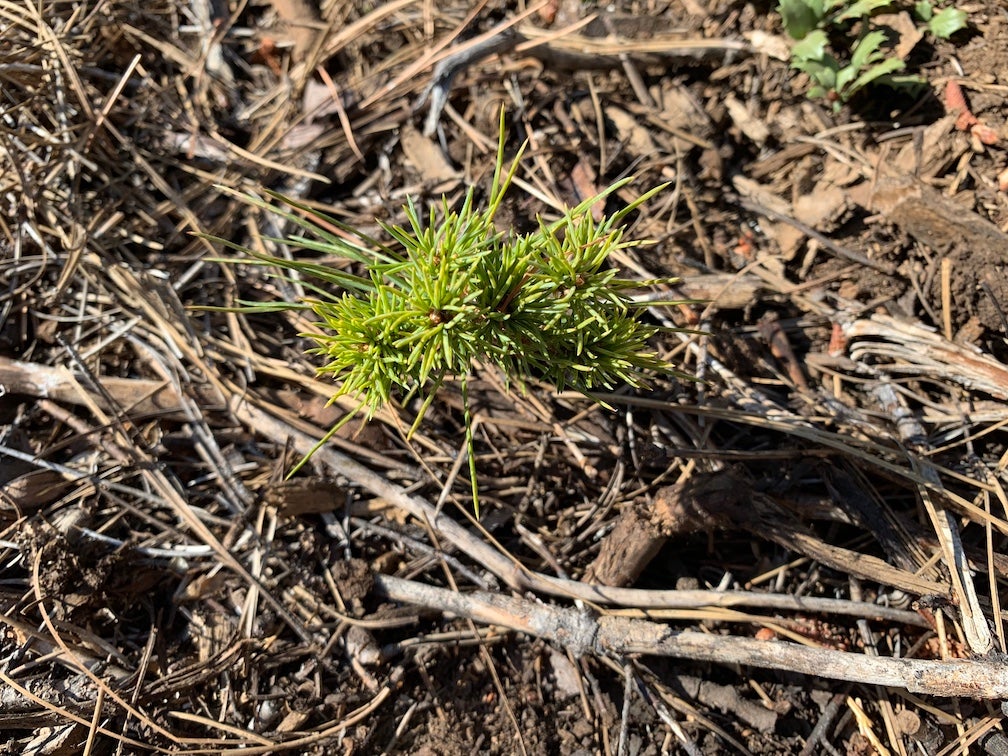Reposted from UC Davis News
Planting Genetic Resilience Into Forests in the Face of Climate Change
California's drought and bark-beetle infestation killed more than 129 million trees between 2012 and 2016 in the Sierra Nevada. But amid the devastation stood some survivors.
At the time, UC Davis biologist Patricia Maloney and a team of researchers entered the forest to collect seeds from 100 surviving sugar pine trees. Alongside other parched sugar pines etched with the tell-tale tunnel marks of bark beetles, were green, healthy trees. The researchers spent the past two years raising 10,000 seedlings from 100 surviving mother trees around the Lake Tahoe Basin. They were first cultivated at the USDA Forest Service's Placerville Nursery and then moved to the UC Davis Tahoe City Field Station.
This week, between 4,000 and 5,000 of the seedlings are being planted around Lake Tahoe's North Shore as part of a restoration project funded by the Tahoe Fund and the California Tahoe Conservancy. About 1,500 will be used to study and identify important adaptive traits, and the remainder will be given to private landowners to plant.

Survivors matter
If the seedlings turn out to be as genetically resilient as Maloney thinks and hopes they will be, these trees could represent the future forest, one better able to withstand the threats of climate change, including more droughts and bark beetle outbreaks.
“These survivors matter,” said Maloney, a scientist in the UC Davis Department of Plant Pathology and Tahoe Environmental Research Center. “Essentially, these are the offspring of drought survivors. This is hopefully the genetic stock of the future.”

Maloney is working with a crew of volunteers from the California Conservation Corps to plant the seedlings around the Tahoe Basin in micro-climates and habitats conducive to their growth and survival, just in time for the coming rain and snow season. After all, they will no longer be hand watered by attentive scientists in a nursery.
“This project not only fosters restorative growth in California's forests, it also plants seeds of forestry awareness and experience in our Corpsmembers that can lead them to careers in forest conservation,” said Bruce Saito, director of the California Conservation Corps.
Planting genetic diversity
While the project is bringing more trees to the forest, it also aims to promote more genetic diversity within the trees.
Sugar pine trees with their giant, foot-long cones, once covered a quarter of Lake Tahoe's forests. Comstock Era logging removed all but 5 percent of them, removing a significant share of their genetic diversity at the same time, Maloney's lab found. Over the years, white pine blister rust and bark beetles have impacted those that remain. By restoring native sugar pines' genetic diversity, Maloney thinks the overall forest will benefit.
It's a small-scale start, but Maloney is excited to track each mother tree to see how it survives.
“Forest tree species have a large capacity for gene flow; they can move long distances,” Maloney said. “Our native tree species have the potential to change.”
Media contact(s)
Patricia Maloney, UC Davis Tahoe Environmental Research Center, 775-881-7569, pemaloney@ucdavis.edu
Kat Kerlin, UC Davis News and Media Relations, 530-752-7704, kekerlin@ucdavis.edu